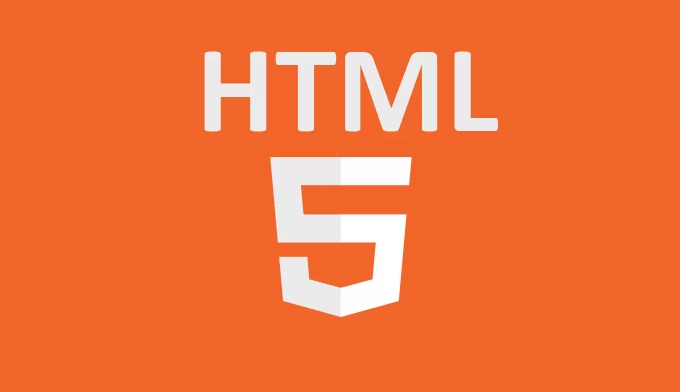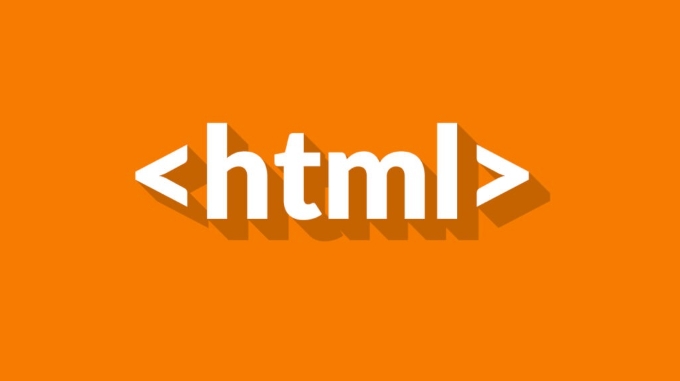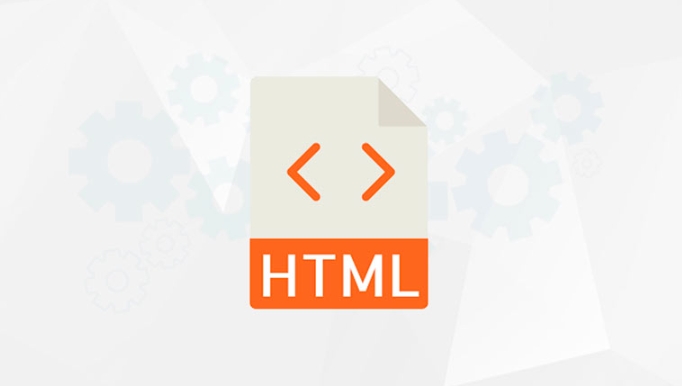HTML5 form validation guide
Form verification can improve efficiency through HTML5 native mechanism. 1. Use the required attribute to ensure the required fields; 2. Use the input type (such as email, number) and pattern attributes to verify the data format; 3. Use the setCustomValidity() method and CSS to adjust the error prompts and styles to optimize the user experience.

Form verification is an indispensable part of web development, especially when users register, log in or submit information. HTML5 provides some native form verification mechanisms that can reduce dependence on JavaScript and improve user experience and development efficiency. Here are some practical tips to help you better use HTML5 form validation.

Required fields: required attribute
If you want a field to be filled in, you can add required attribute to the corresponding input element. This property tells the browser that the field cannot be empty until the user submits the form.
For example:

<input type="text" name="username" required>
The browser will prompt an error when the user tries to submit a null value. Note that the prompt styles of different browsers may be slightly different, but the functions are consistent. If you want to unify the prompt style, you may need to customize it in combination with JavaScript or CSS.
Data type verification: input type and pattern attributes
HTML5 introduces a variety of input types, such as email , url , number , etc., which will automatically perform basic data format checks.

For example:
<input type="email" name="email">
This will ensure that the user enters a legal email address format. If the standard type cannot meet the needs, you can use pattern attribute and regular expression to define more complex rules:
<input type="text" name="zipcode" pattern="\d{6}" title="Please enter the 6-digit zip code"> Here, you need to enter a 6-digit zip code and give a prompt message through title .
A few points to note:
- Regular expressions do not require slashes
/wraps - Different browsers have slightly different support for pattern, so it is recommended to perform compatibility testing.
- Mobile devices may pop up different keyboards according to input type (such as email keyboard)
Custom error prompts and style adjustments
By default, the browser's error prompts are relatively simple and sometimes do not conform to the product design style. Although the prompt content cannot be completely replaced (because of browser restrictions), the verification logic and error messages can be customized through setCustomValidity() method.
For example:
document.querySelector('form').addEventListener('submit', function(e) {
var password = document.getElementById('password');
if (password.value.length < 6) {
password.setCustomValidity('Password is at least 6 digits');
e.preventDefault();
}
});In addition, you can use CSS to beautify the input box style when verification fails:
input:invalid {
border-color: red;
} However, it should be noted that :invalid pseudo-class will take effect when the page is loaded, which may cause the user to see the red border before entering, affecting the experience. Styles can be applied only after submission through JavaScript.
Basically that's it. Although HTML5 form verification is simple, it can significantly improve user experience and development efficiency if used properly. It is not complicated but easy to ignore that sometimes we rely too much on JavaScript and ignore native capabilities.
The above is the detailed content of HTML5 form validation guide. For more information, please follow other related articles on the PHP Chinese website!

Hot AI Tools

Undress AI Tool
Undress images for free

Undresser.AI Undress
AI-powered app for creating realistic nude photos

AI Clothes Remover
Online AI tool for removing clothes from photos.

Clothoff.io
AI clothes remover

Video Face Swap
Swap faces in any video effortlessly with our completely free AI face swap tool!

Hot Article

Hot Tools

Notepad++7.3.1
Easy-to-use and free code editor

SublimeText3 Chinese version
Chinese version, very easy to use

Zend Studio 13.0.1
Powerful PHP integrated development environment

Dreamweaver CS6
Visual web development tools

SublimeText3 Mac version
God-level code editing software (SublimeText3)
 How does the HTML5 parser handle errors?
Aug 02, 2025 am 07:51 AM
How does the HTML5 parser handle errors?
Aug 02, 2025 am 07:51 AM
HTML5parsershandlemalformedHTMLbyfollowingadeterministicalgorithmtoensureconsistentandrobustrendering.1.Formismatchedorunclosedtags,theparserautomaticallyclosestagsandadjustsnestingbasedoncontext,suchasclosingabeforeaandreopeningitafterward.2.Withimp
 The Importance of Semantic HTML for SEO and Accessibility
Jul 30, 2025 am 05:05 AM
The Importance of Semantic HTML for SEO and Accessibility
Jul 30, 2025 am 05:05 AM
SemanticHTMLimprovesbothSEOandaccessibilitybyusingmeaningfultagsthatconveycontentstructure.1)ItenhancesSEOthroughbettercontenthierarchywithproperheadinglevels,improvedindexingviaelementslikeand,andsupportforrichsnippetsusingstructureddata.2)Itboostsa
 What are HTML5 data attributes?
Aug 06, 2025 pm 05:39 PM
What are HTML5 data attributes?
Aug 06, 2025 pm 05:39 PM
HTML5dataattributesarecustom,validHTMLattributesusedtostoreextrainformationinelementsforJavaScriptorCSS.1.Theyaredefinedasdata-*attributes,likedata-user-id="123".2.Theyallowembeddingprivate,customdatadirectlyinmarkupwithoutaffectinglayoutor
 Defining custom vocabularies using HTML5 Schema.org markup.
Jul 31, 2025 am 10:50 AM
Defining custom vocabularies using HTML5 Schema.org markup.
Jul 31, 2025 am 10:50 AM
The Schema.org tag helps search engines understand the structured data format of web page content through semantic tags (such as item scope, item type, itemprop); it can be used to define custom vocabulary, methods include extending existing types or using additionalType to introduce new types; in actual applications, keeping the structure clear, using official attributes first, testing code validity, and ensuring that custom types are accessible; precautions include accepting partial support, avoiding spelling errors, and choosing a suitable format such as JSON-LD.
 How to handle mouse events on an HTML5 canvas?
Aug 02, 2025 am 06:29 AM
How to handle mouse events on an HTML5 canvas?
Aug 02, 2025 am 06:29 AM
To correctly handle mouse events on HTML5 canvas, first add an event listener to canvas, then calculate the coordinates of the mouse relative to canvas, then judge whether it interacts with the drawn object through geometric detection, and finally realize interactive modes such as drag and drop. 1. Use addEventListener to bind mousedown, mousemove, mouseup and mouseleave events for canvas; 2. Use getBoundingClientRect method to convert clientX/clientY to coordinates relative to canvas; 3. Detect mouse through manual geometric calculations (such as the distance formula of rectangle boundary or circle)
 What is the aside element for in HTML5?
Aug 12, 2025 pm 04:37 PM
What is the aside element for in HTML5?
Aug 12, 2025 pm 04:37 PM
Theelementshouldbeusedforcontenttangentiallyrelatedtothemaincontent,suchassidebars,pullquotes,definitions,advertisements,orrelatedlinks;2.Itcanbeplacedinsideoroutsideanarticledependingoncontext;3.ItisasemanticelementthatenhancesaccessibilityandSEObyp
 What is the readonly attribute in HTML5?
Aug 08, 2025 am 11:55 AM
What is the readonly attribute in HTML5?
Aug 08, 2025 am 11:55 AM
ThereadonlyattributeinHTML5makesforminputsnon-editablewhilestillallowingsubmissionanduserinteraction;1.Itappliestoandelements;2.Itisabooleanattribute,soonly"readonly"needstobepresent;3.Unlike"disabled",itallowsfocusandthedataisinc
 What are the supported audio formats in HTML5?
Aug 05, 2025 pm 08:29 PM
What are the supported audio formats in HTML5?
Aug 05, 2025 pm 08:29 PM
HTML5 audio format support varies from browser to browser. The most commonly used formats include: 1.MP3 (.mp3, audio/mpeg, supported by all mainstream browsers, with the best compatibility); 2.WAV (.wav, audio/wav, support better but large files, suitable for short audio); 3.OGG (.ogg/.oga, audio/ogg, Chrome, Firefox, Opera support, Safari and IE are not supported, open source free); 4.AAC (.aac/.m4a, audio/aac, Safari, Chrome, Edge support, Firefox support is limited, often used in Apple devices). To ensure compatibility, the







